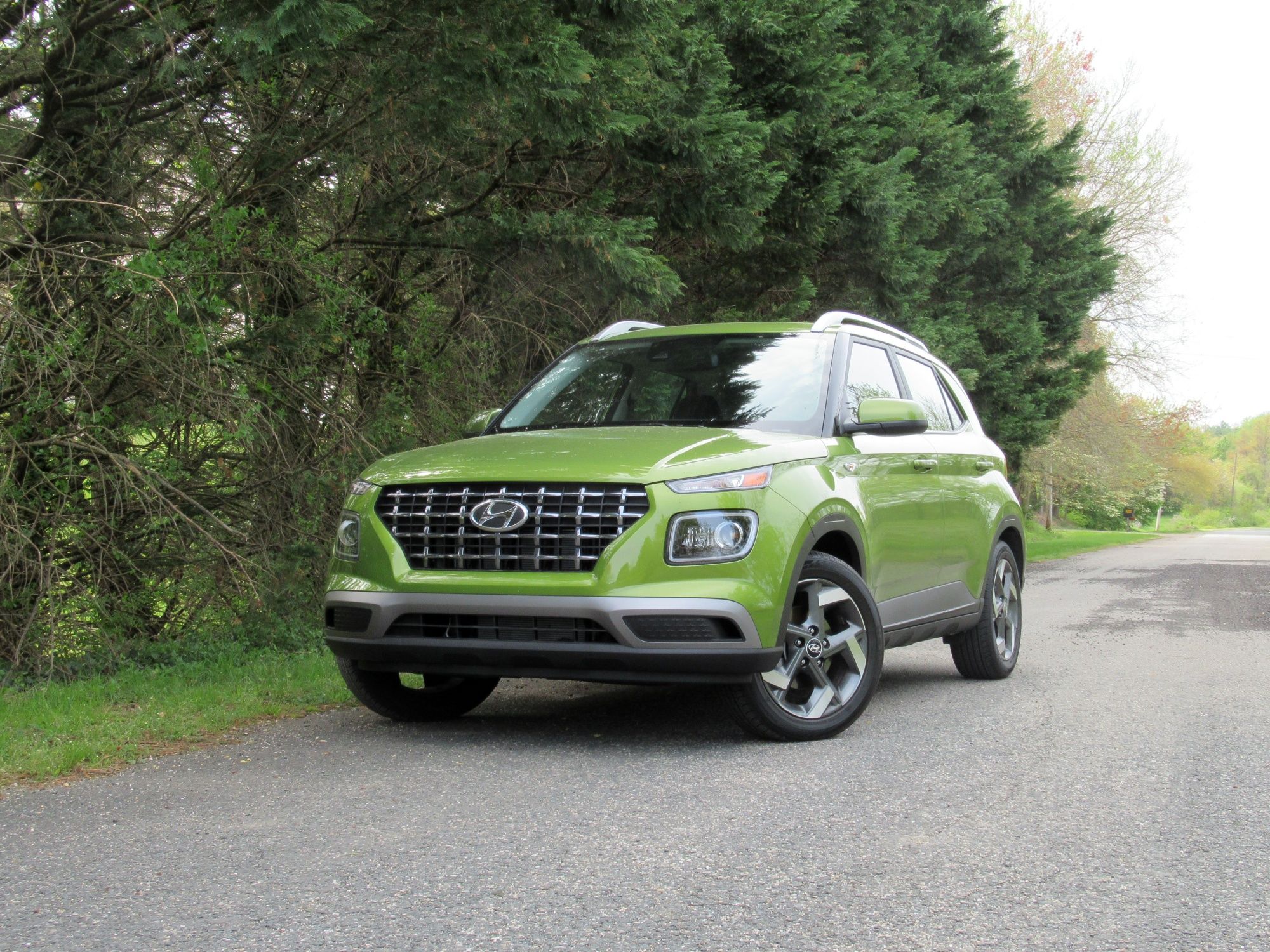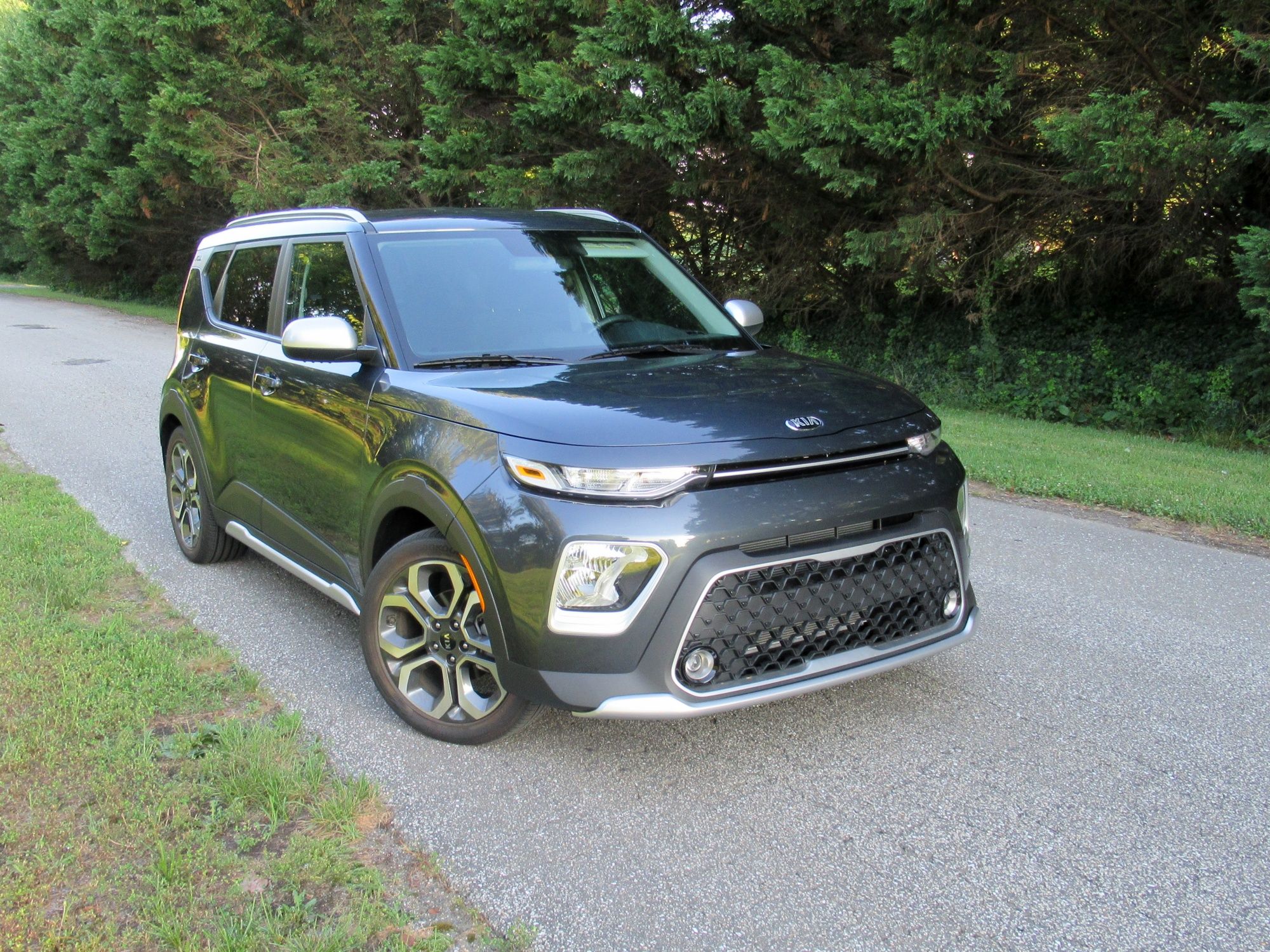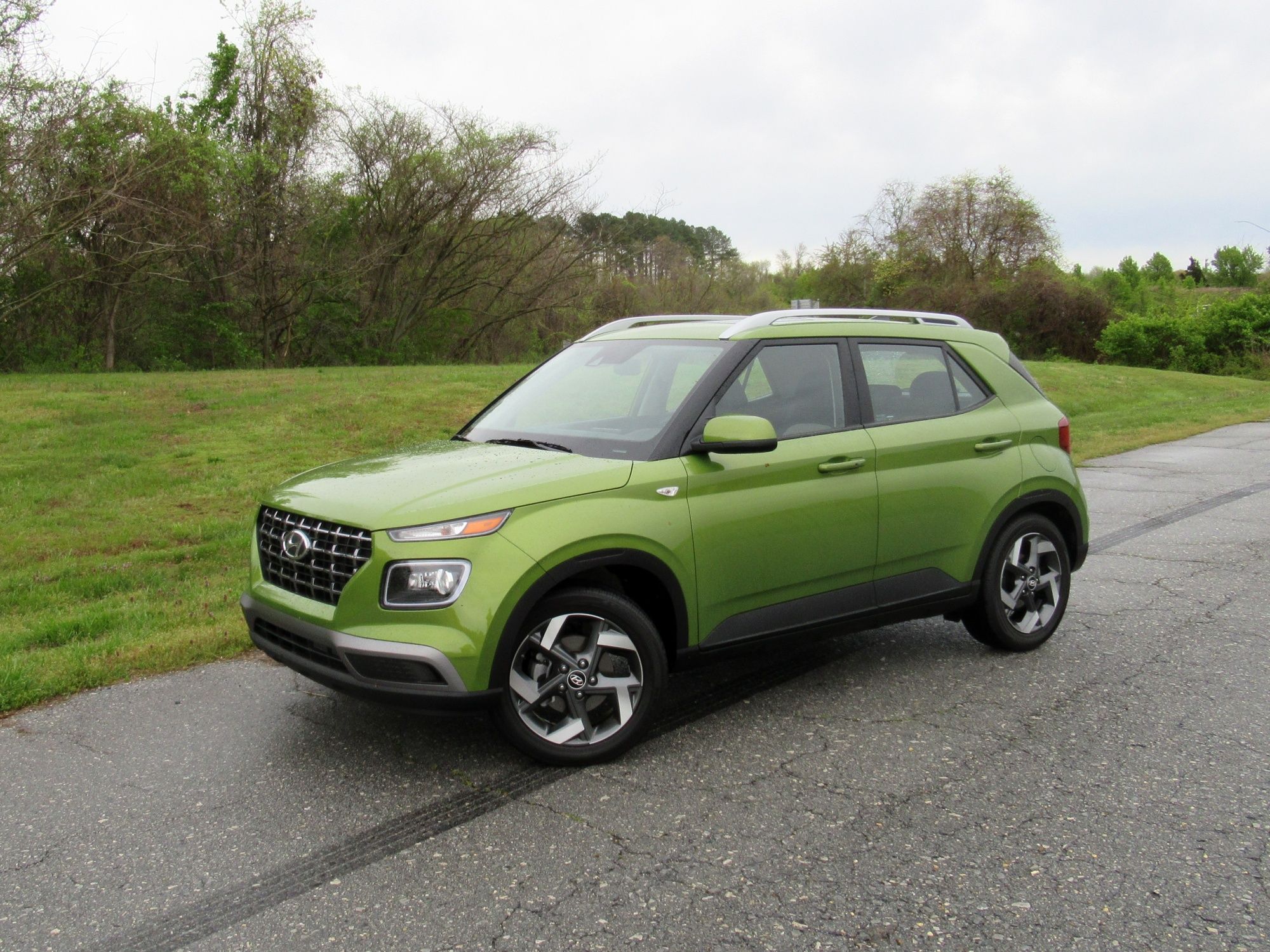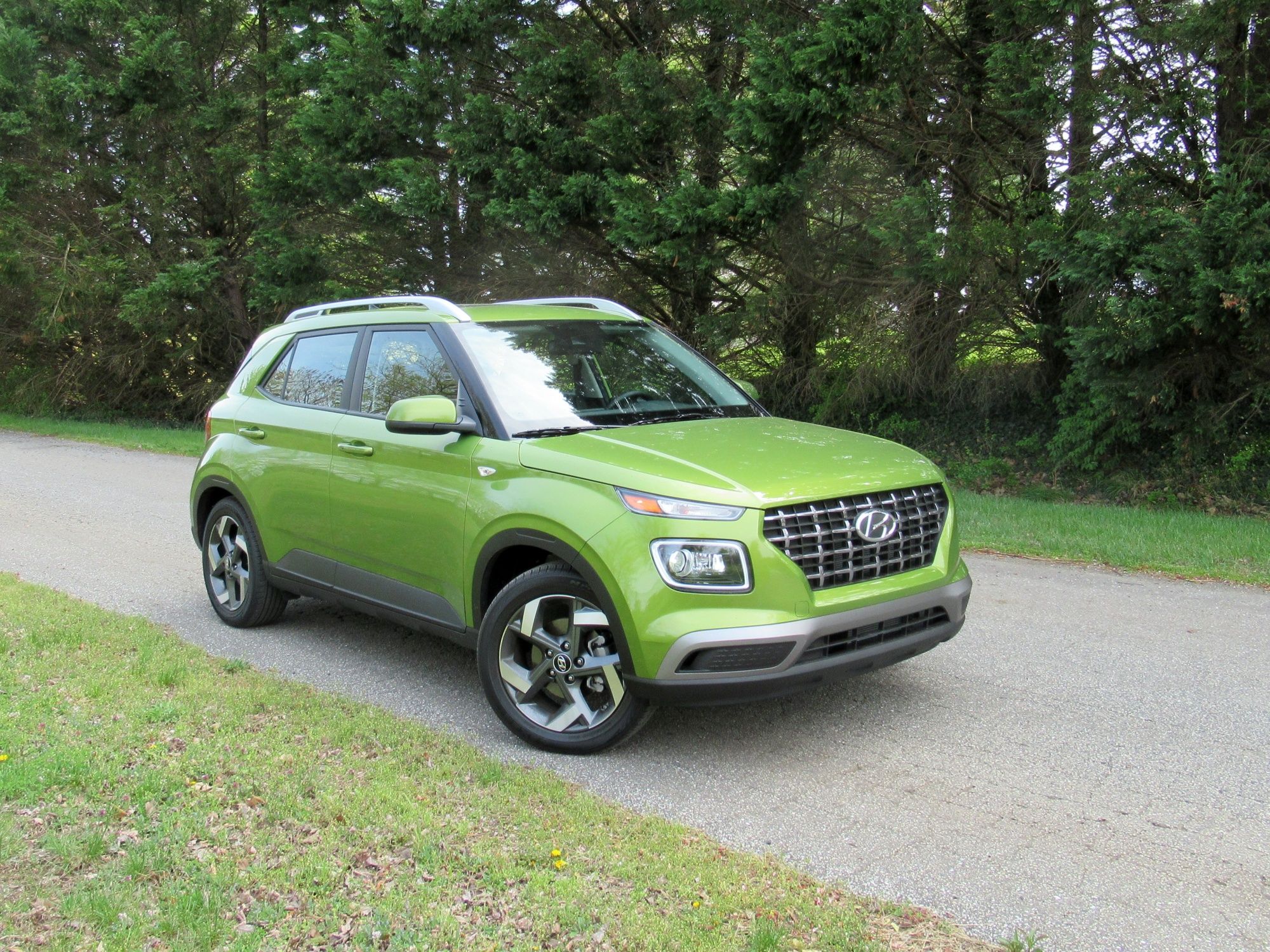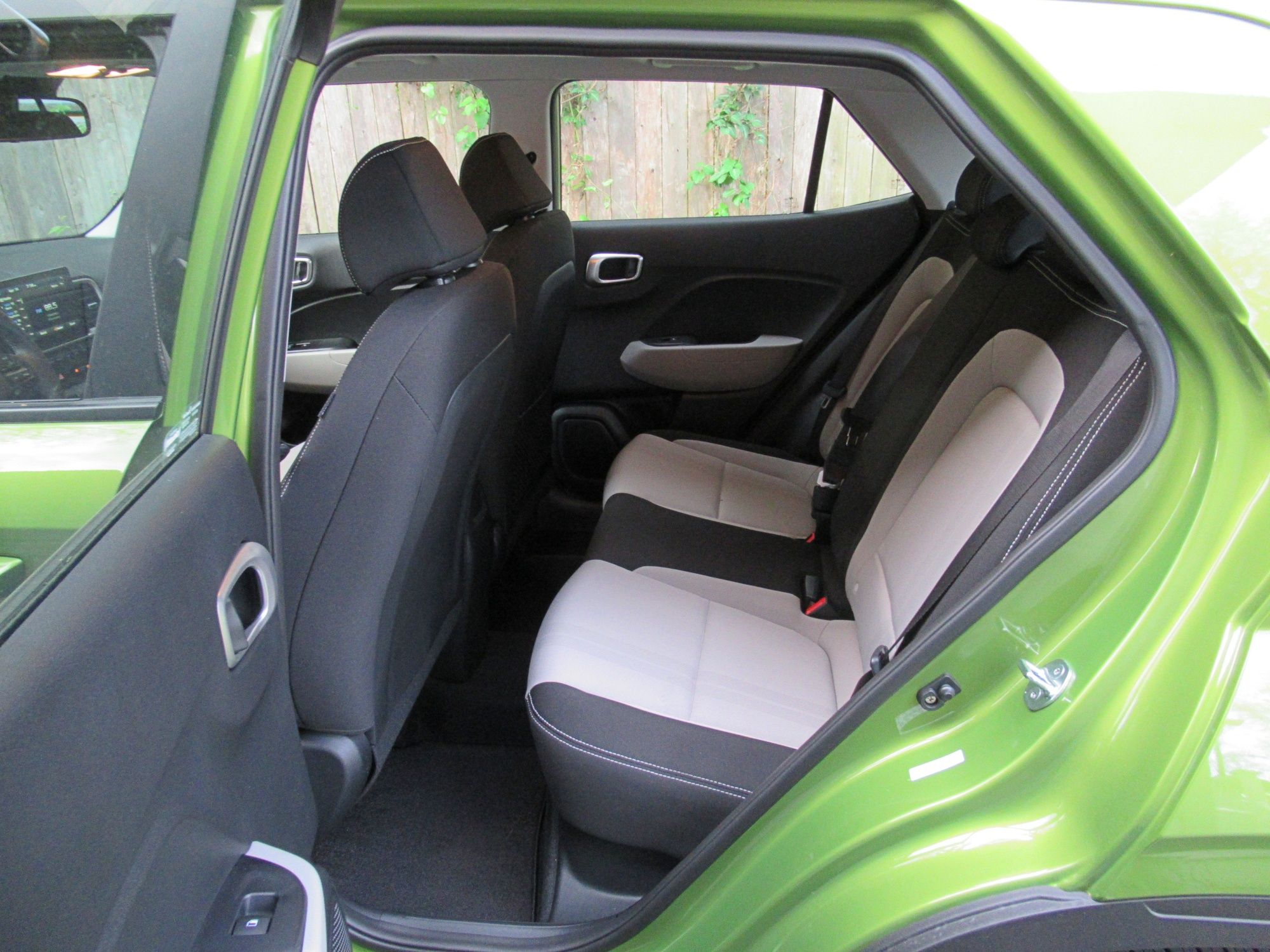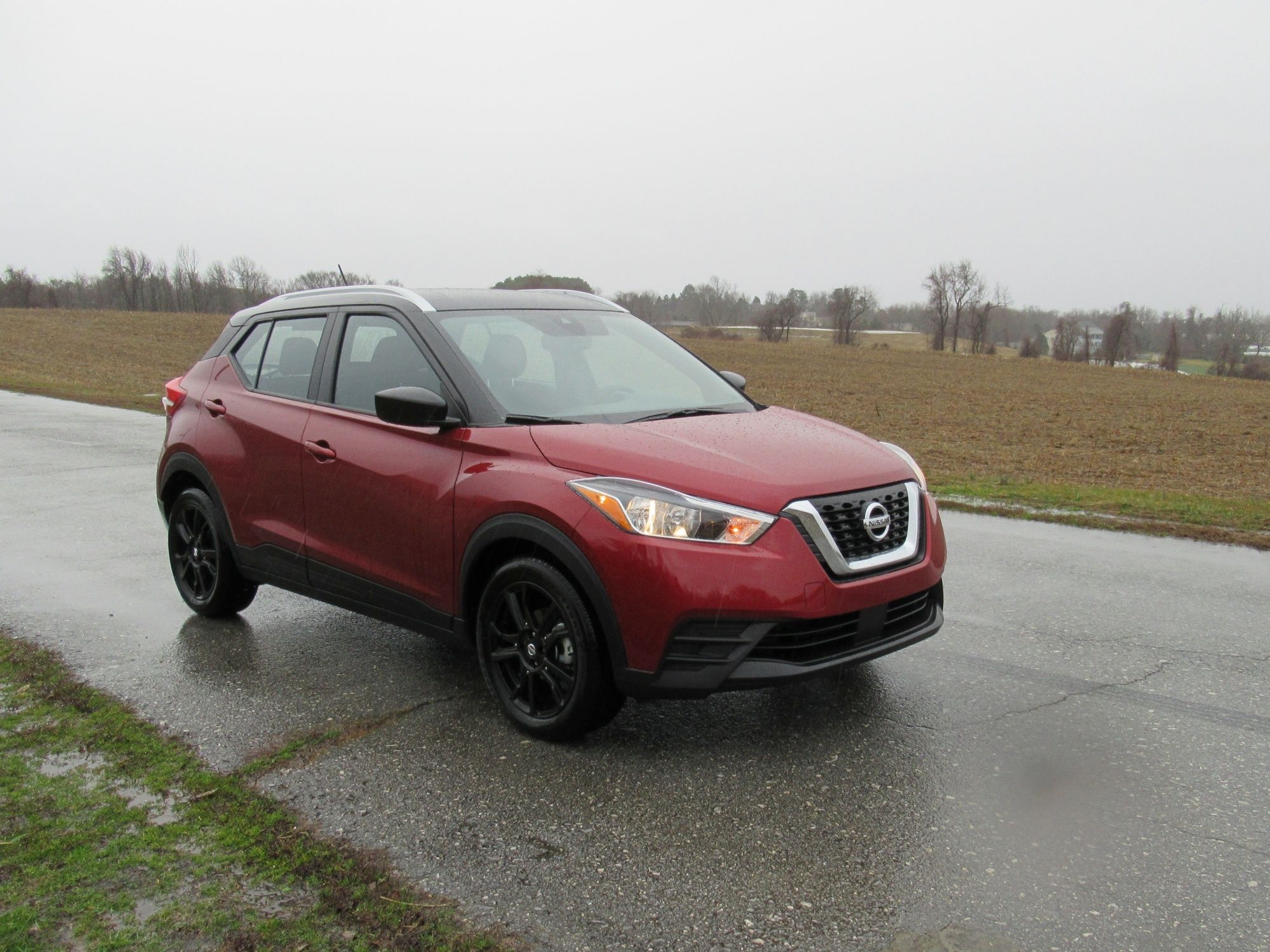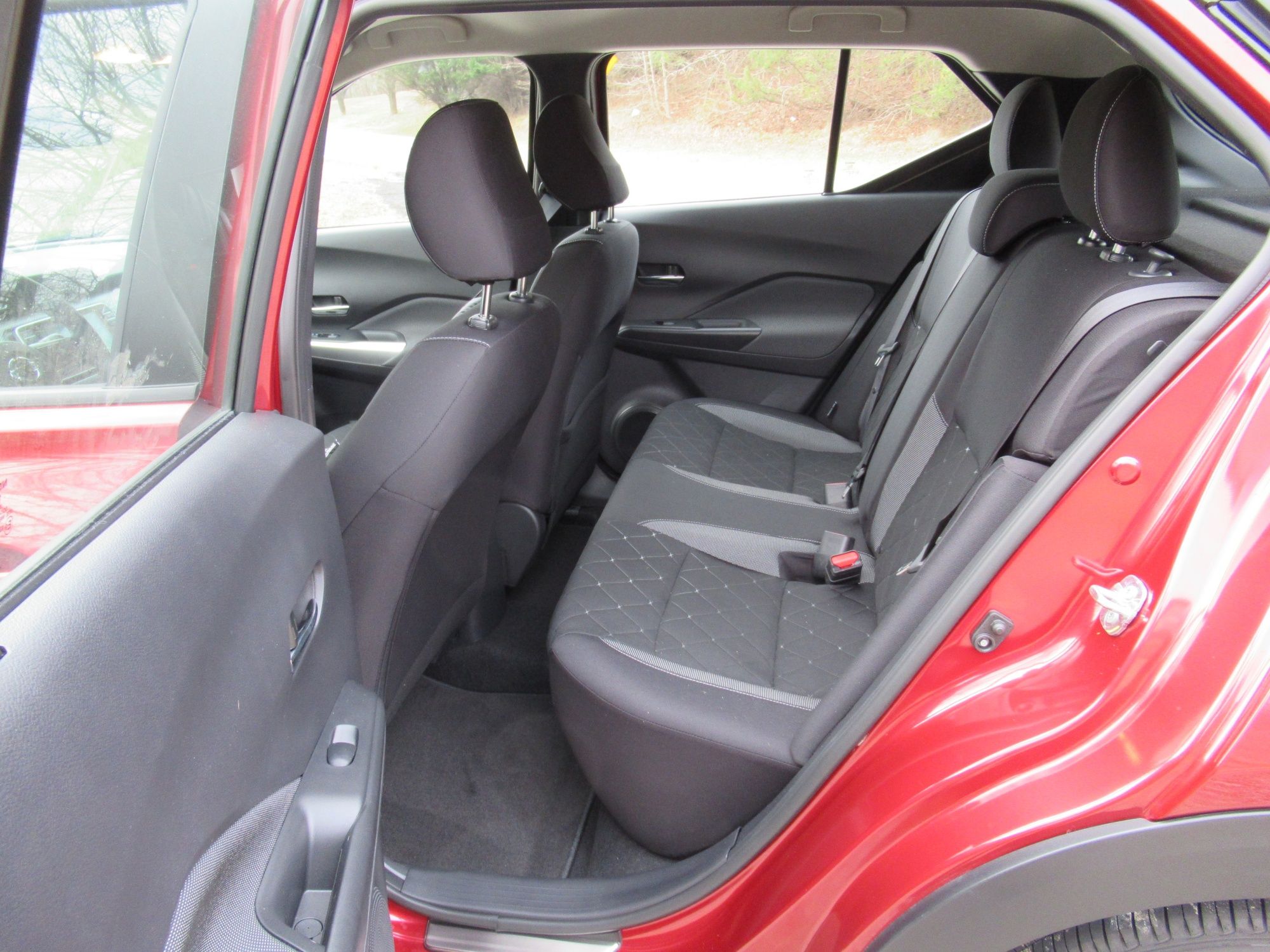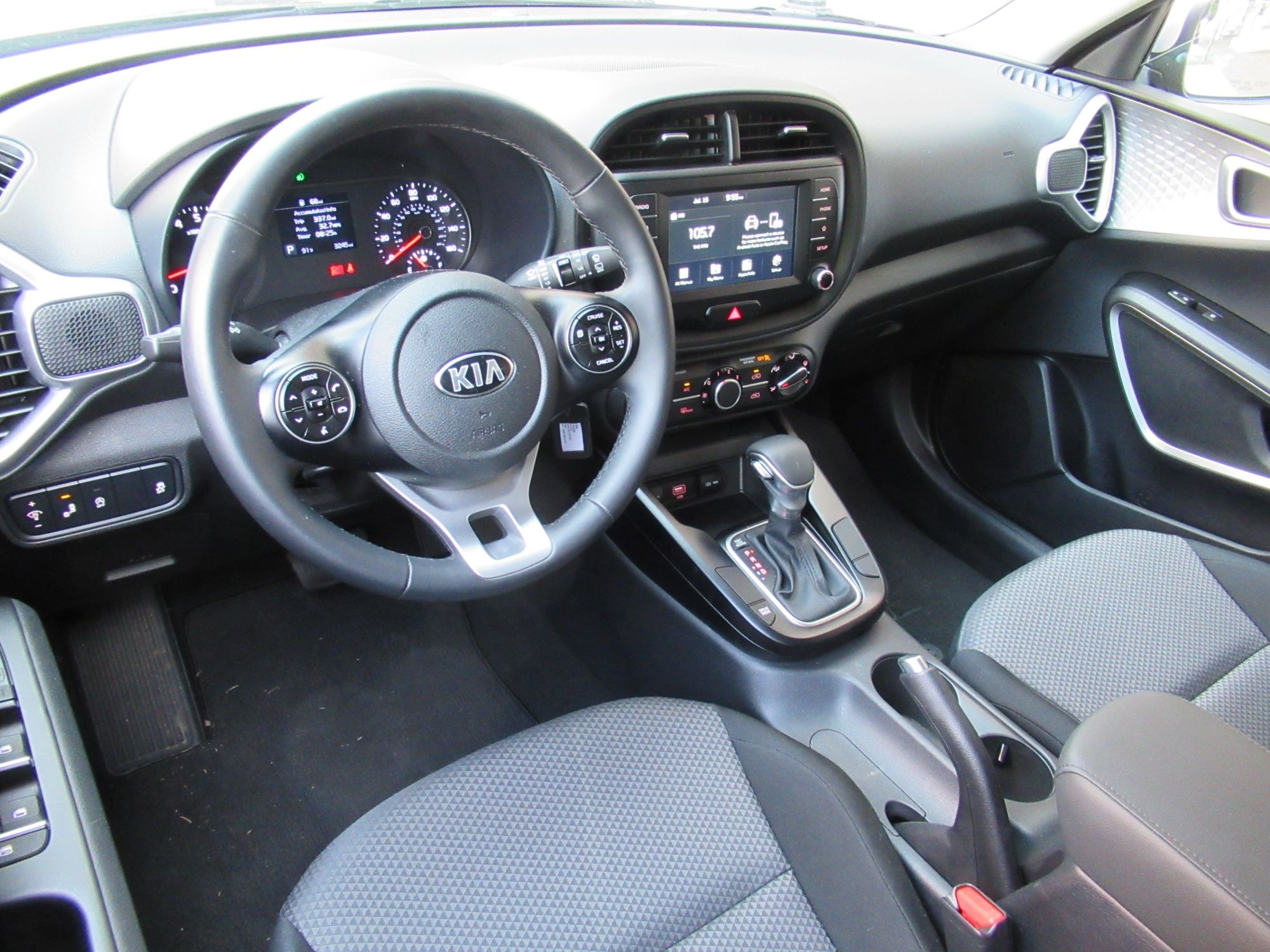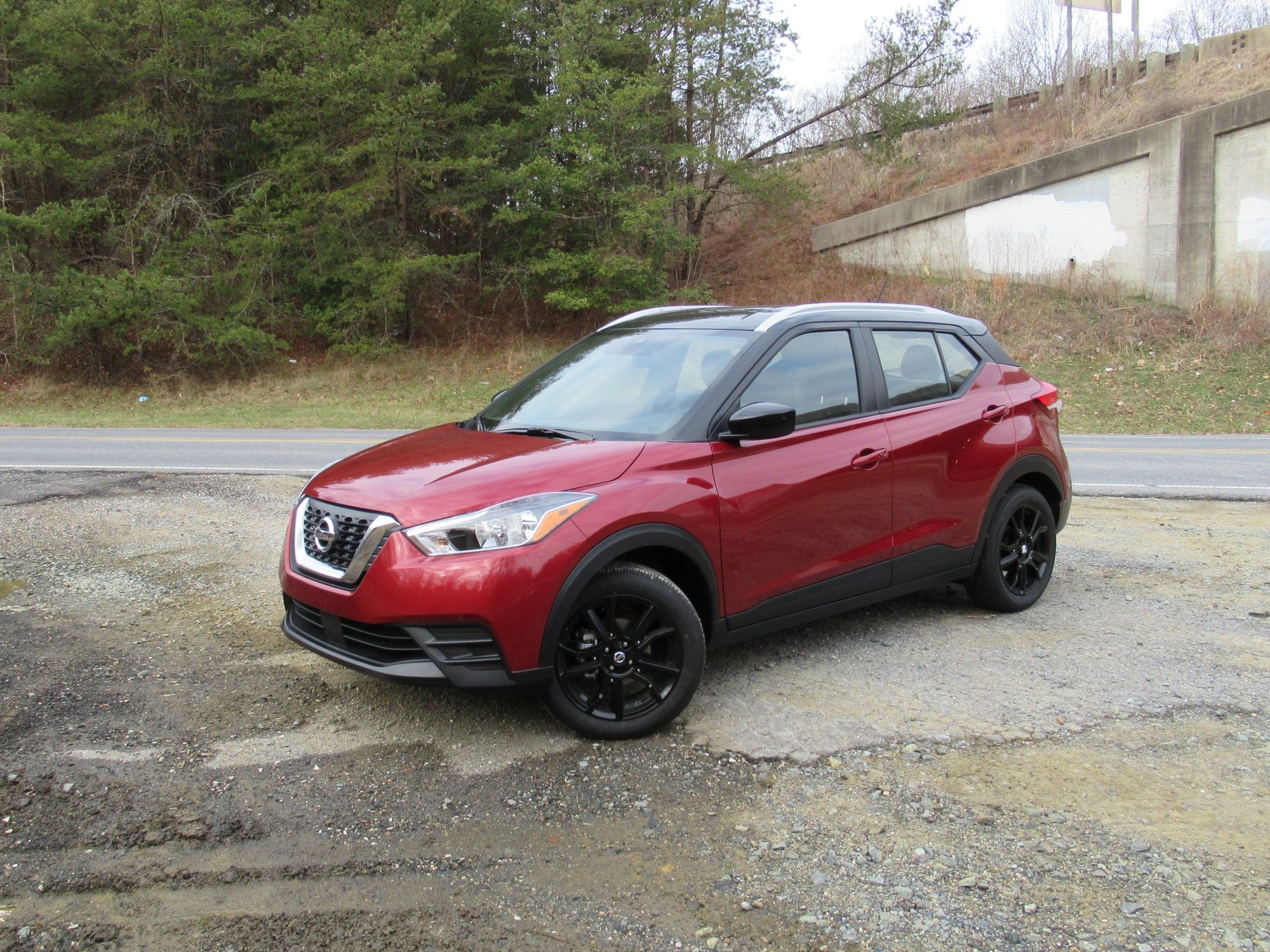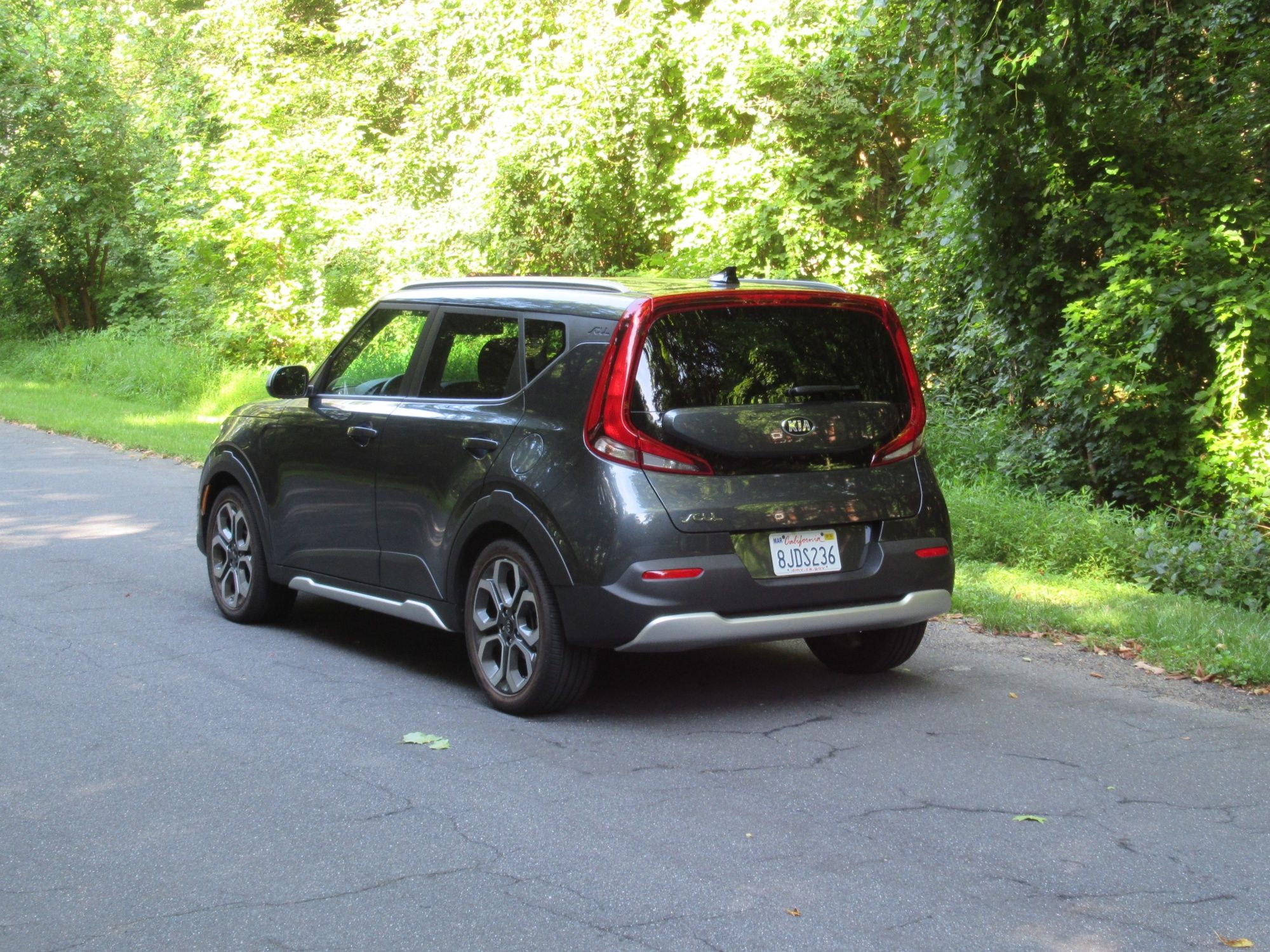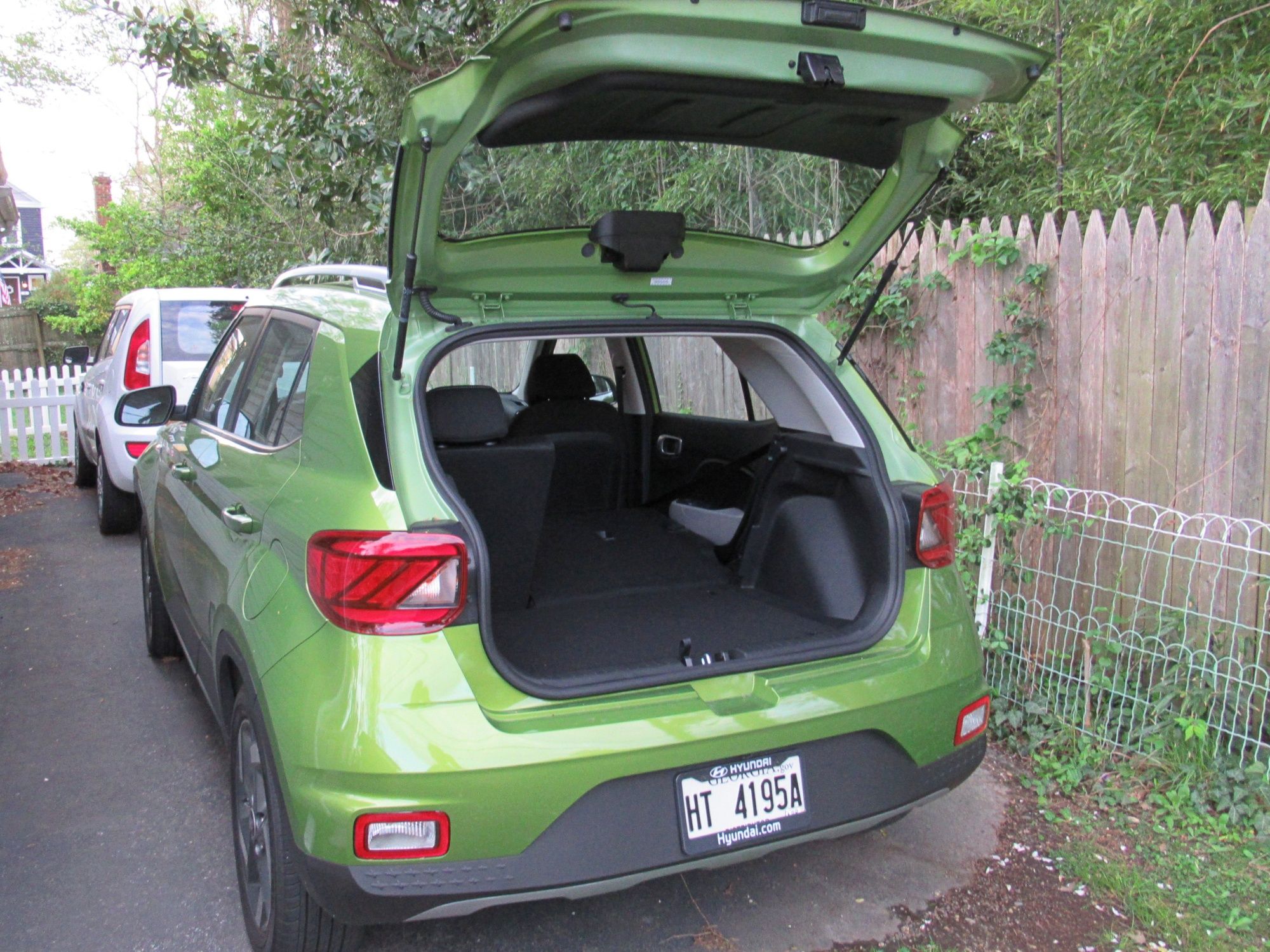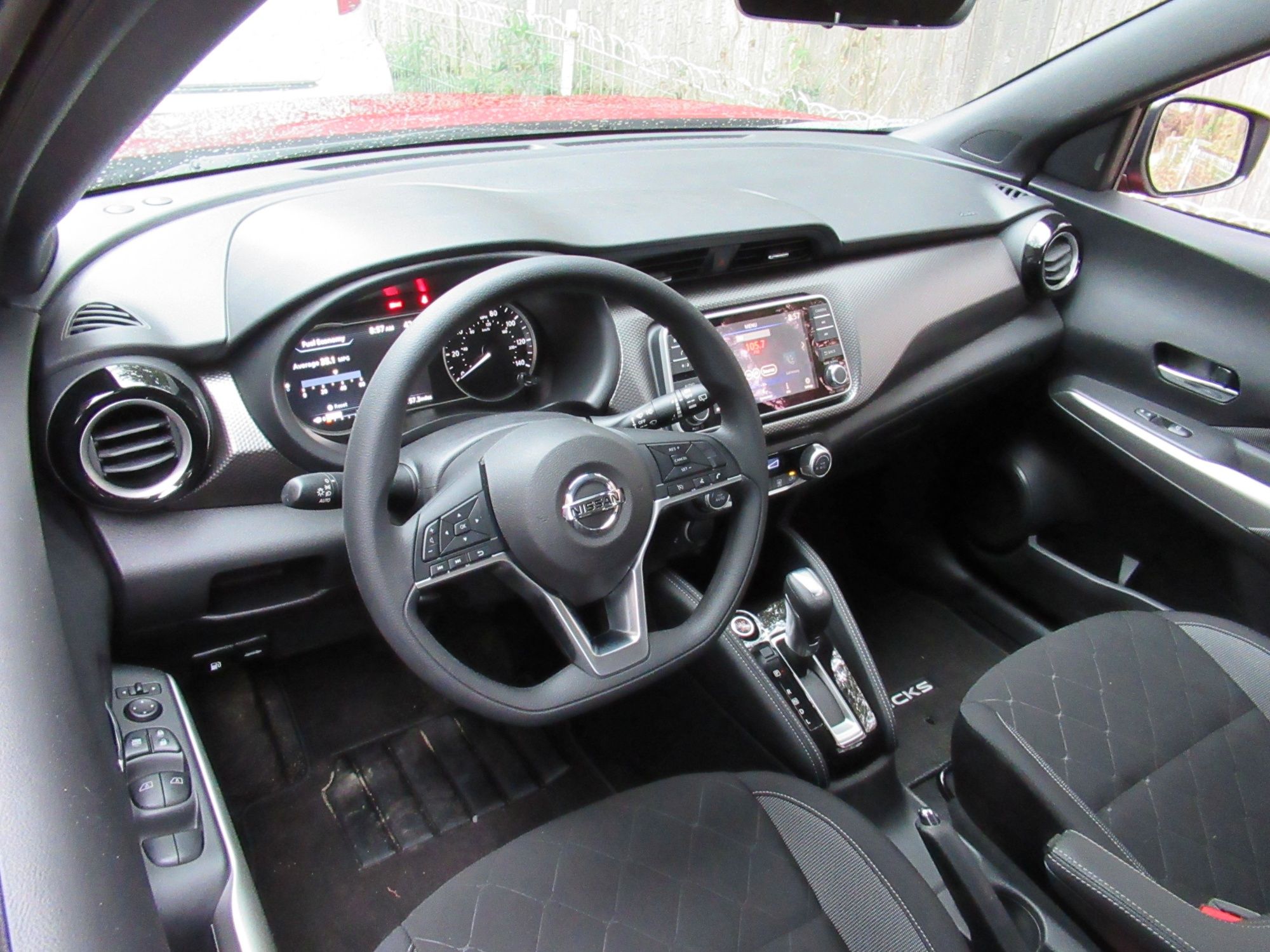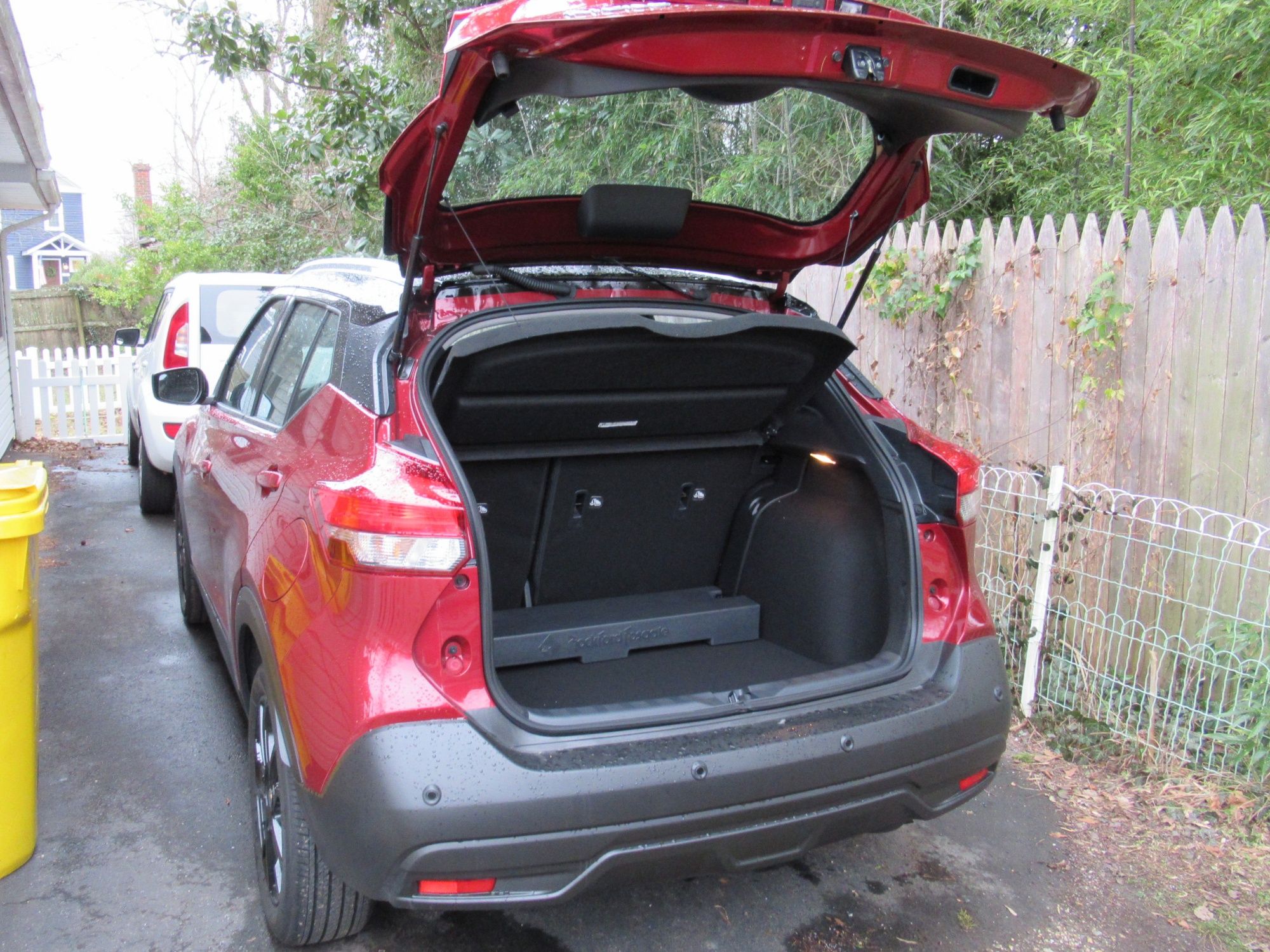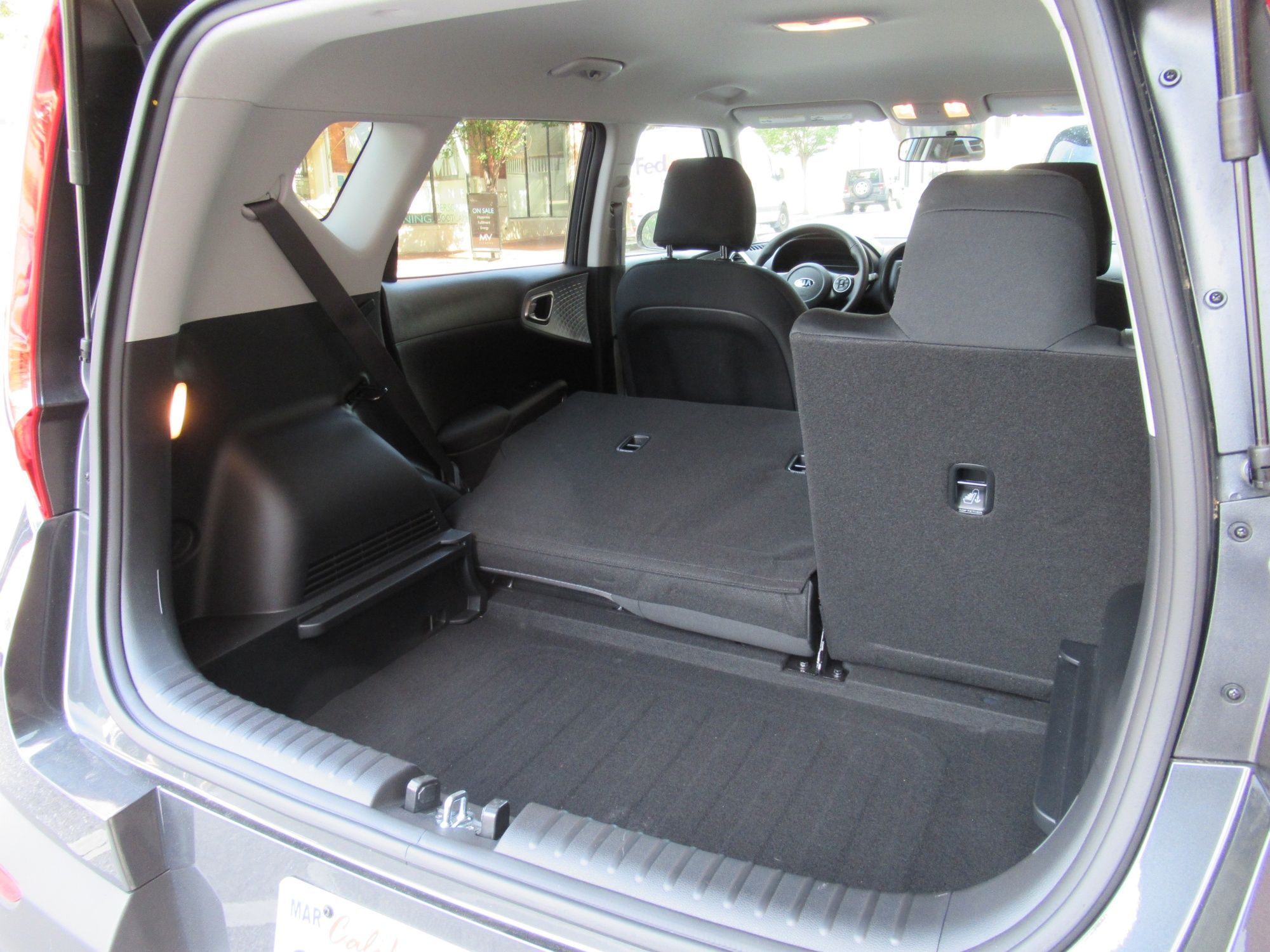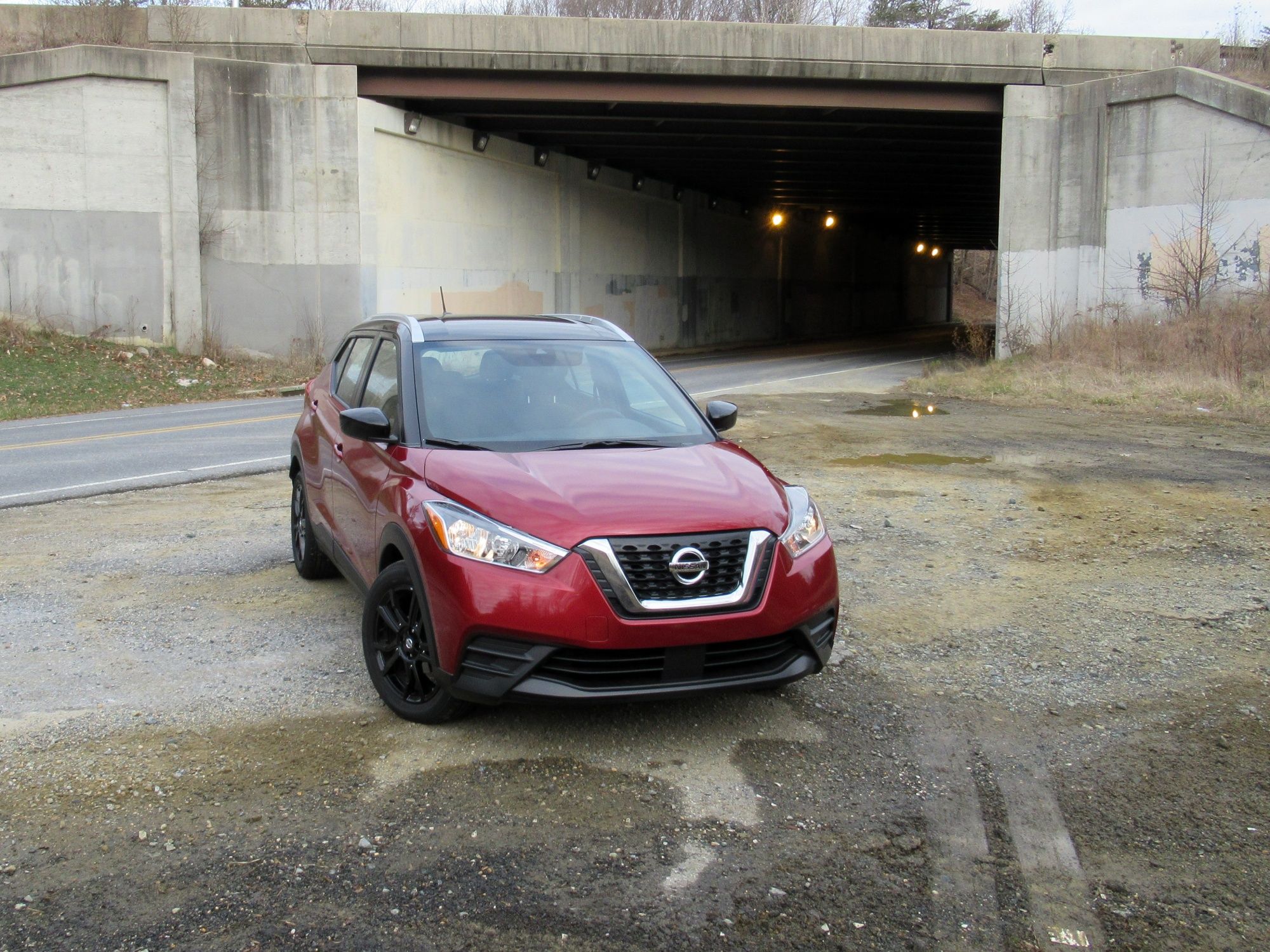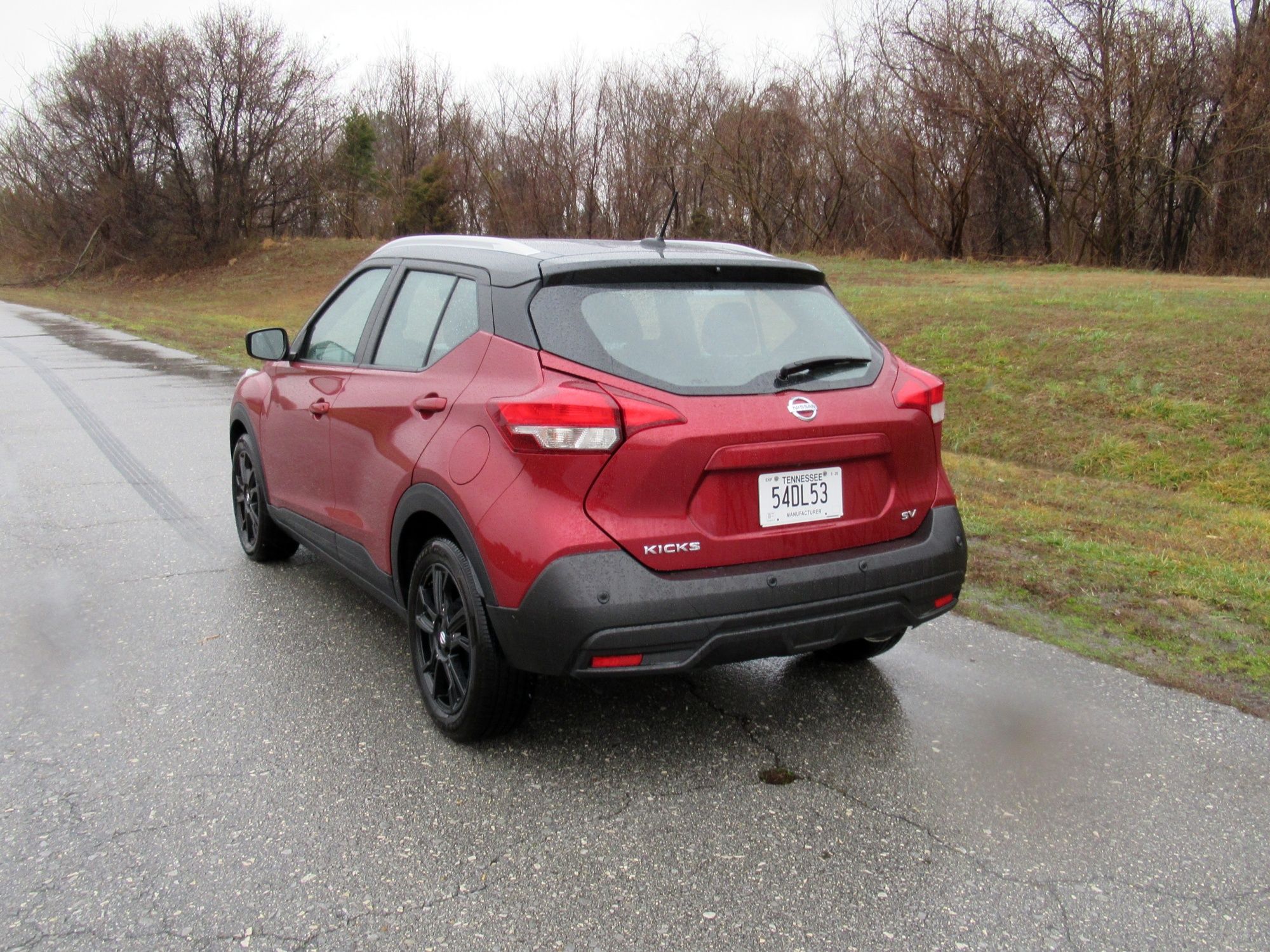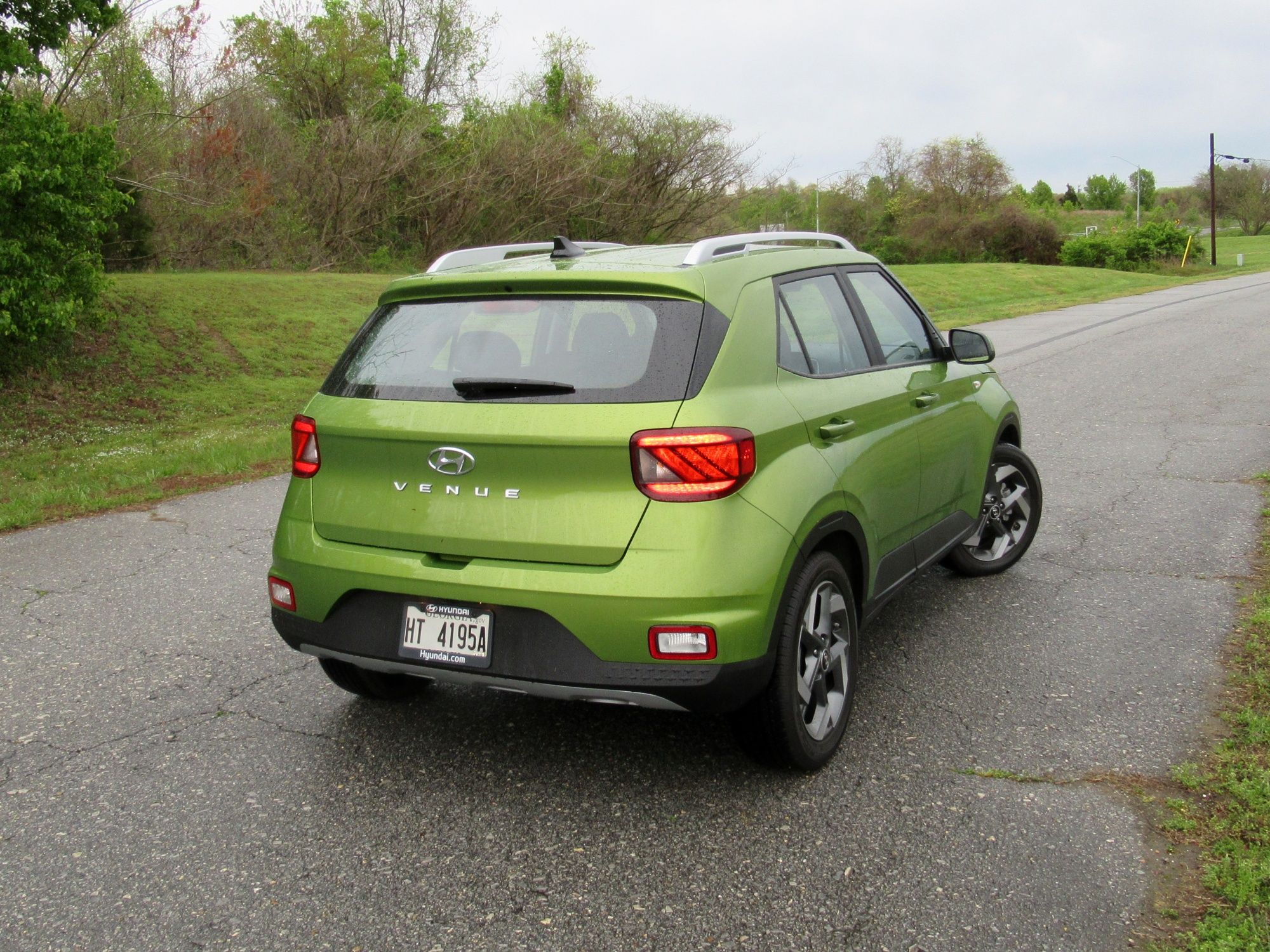Ever since Subaru lifted the Legacy’s suspension, slapped on some body cladding, and called it the Outback, it’s been harder and harder to draw a firm line between 'regular' cars and SUVs. And we recently drove three vehicles that are right in that blurry area. Their manufacturers call them crossovers, and they’re tall and plastic-clad. But they’re tiny and come only with front-wheel-drive.
Whatever you call them, the all-new 2020 Hyundai Venue, the freshly-redesigned 2020 Kia Soul, and the 2020 Nissan Kicks are a lot of vehicle for the money. They all start below $20,000, all get at least 30 mpg, and all have higher seating positions and more cargo room than a sedan. They slot under their brands’ crossovers that already wear the pint-sized label of subcompact — the Hyundai Kona, Kia Seltos, and Nissan Rogue Sport — to provide an even lower price and even more city-friendly parking abilities.
Background
The Soul invented this segment when it became an unexpected smash hit in 2010. It offered an agreeable combination of small size, a low price, tons of space, and funky styling. Its second-generation, sold from 2014 to 2019, added a smoother, quieter ride, a wider stance, and a higher-quality interior to the mix. And the third generation, introduced for 2020, brings a more SUV-looking take on its now-familiar styling, along with improved gas mileage, even more interior room, and more widely available safety features.
The Kicks arrived as a 2018 model, effectively replacing the Versa Note five-door hatchback and generally impressing for its bang for the buck. Like the Versa Note before it, its styling is less polarizing than the Soul’s, it’s more fuel-efficient, and it has less power. The Kicks traces its roots to Nissan’s Brazilian division, and its utility and value make it a sales leader in many of the world’s developing markets.
The Venue is the newest entrant to this scene. It undercuts the Soul’s and Kicks’ base prices while delivering a crisply modern exterior and interior design, with bold, sharp lines and a cheekily boxy shape that make it look more expensive than it is. And Hyundai’s newly announced free-maintenance program joins its existing extra-long warranty to bolster its value credentials.
As is often the case with extra-affordable, extra-small vehicles, each of these three models has some drawbacks. Some drivers wouldn’t find any of them to be satisfactory and would pay more for something bigger and fancier. But if you can accept or even prefer this type of vehicle, we’ve compared the Venue against the Soul and Kicks. Based on our analysis and driving experience in the three vehicles, we’ve ranked them in each of four categories and then named our overall winner.
STYLE AND DESIGN
We know that style is subjective. We’re not picking our overall winner based on looks. But one of the big things that separate these three vehicles is their design. They each adopt a different vibe and prioritized different areas.
Third place: 2020 Hyundai Venue
The Venue is the smallest vehicle in our trio, and it uses its tiny size to endearing effect. It’s an upright little box with almost no front or rear overhangs. In pictures, it looks like an SUV — but in person, it’s clear that it’s quite small. At 159.1 inches long, the Venue stretches just 5 inches farther from nose to tail than a Mazda MX-5 Miata (and 10 inches shorter than the Kicks). But it’s more than a foot taller than the highest point of Mazda’s roadster.
The base SE model has little 15-inch steel wheels with plastic covers, and while the mid-level SEL upgrades to alloys, they’re still the same size and look lost in the car’s big wheel wells. Another smaller miscue: Indents at the top of each wheel well look like the result of a parking mishap.
Inside, the Venue makes a great first impression with a cleanly modern design, a classy two-tone color scheme, and an up-to-date, 8-inch screen infotainment screen sitting front and center. And controls are user-friendly, featuring simple buttons and knobs in addition to the touchscreen (which measures 8 inches even on the base model). Spend some time in the Venue, though, and you’ll notice where Hyundai labored to keep costs down. Plastics are hard and basic, and the worst offenders are right where you’d put your elbows on the door armrests — even on well-equipped models like our test vehicle. Overall, the Venue has an attractive, contemporary design that’s let down by cost-cutting inside and out.
Second place: 2020 Nissan Kicks
This approach also leaves the Kicks looking more like a car than an SUV from the front. Still, the Kicks isn’t unattractive, with clean lines and nothing really to hate about it. The perky rear end is more interesting than the rounded front, and the Kicks has more lower-body cladding than the Venue or Soul for a slightly more SUV-like vibe. And while the base model does have steel wheels, they’re 16 inches to the Venue’s 15 inches, and both the Kicks’ other trim levels provide 17-inch alloys as standard equipment. (The black wheels on our test car are an extra $495 over the standard silver, and its two-tone paint job is another $250 extra charge.)
Inside, the Kicks once again looks much older than the Venue. There are fewer flourishes to the dashboard, and hard, gray plastics are the order of the day. The dashboard touchscreen is 7 inches instead of 8. But while the Nissan is basic, it’s a generally successful execution of unpretentious functionality — basic done well. The dashboard and seats are nicely textured, and the armrests are padded (though the front seats’ center armrest is narrow and is an extra-cost option). This isn’t a fancy or stylish vehicle, but the Kicks doesn’t bite off more than it can chew.
First place: 2020 Kia Soul
The Soul has stayed true to its decade-old predecessor, while also not looking like a throwback. It’s gotten a wider, more purposeful stance over the years, and this year’s narrower headlights help it look more like an SUV than the old Soul’s bigger, rounder lamps. Around back, the Soul’s high-mounted taillights wrap around the top of the windshield, making this vehicle unmistakable. Not everyone will love how the Soul looks, but we’re all used to it now. What’s more, nothing about the design suggests it’s one of the least expensive vehicles you can buy today. We tested the X-Line trim level, which dresses up the Soul a bit more like an SUV; there’s also a sport-themed GT-Line that’s available either with or without a performance-enhancing turbo engine.
For better or for worse, the interior is more conservative than the exterior, with a gently rounded dashboard and an infotainment screen in the middle (a modest and subtly colored 7-inch unit on most trim levels and a big, brighter 10.25-inch screen on high-end models). Controls move fluidly, and more materials are a cut above basic, even if some of the plastics remain economy-grade. There isn’t a lot of pizzazz, aside for some dressy trim on the interior door panels — but at this price point, the Soul is already a class act even without extra flourishes. One weak point: The Soul skips adjustable rear head restraints on most trim levels, a throwback to cheap cars from a decade ago or more.
DRIVING EXPERIENCE
None of these cars is a driving enthusiast’s first pick, especially once we remove the ringer. That’s the Soul with its optional 201-horsepower turbocharged engine, whose $27,490 price tag soars past any Kicks or Venue. Sticking to equivalent models (and we didn’t love the turbo Soul’s transmission anyway), the three vehicles are closer together. But some notable differences are still worth exploring.
Third place: 2020 Nissan Kicks
Its 1.6-liter four-cylinder engine sends just 122 horsepower and 114 lb-ft of torque to the front wheels through a continuously variable automatic transmission (CVT) — but it’s tuned to be peppy and eager at low speeds. The steering and handling are also lithe and responsive when you aren’t moving too fast, the Kicks has a tight 34.2-foot turning circle, and the compliant suspension absorbs bumps smoothly.
The Kicks doesn’t shine as brightly at higher speeds. That’s where its little engine runs out of breath, and where its suspension starts to lose composure. The Kicks is tall, light, and down on horsepower, and none of that makes for a relaxed highway driving experience.
That’s not to say you can’t hustle a Kicks in the interstate’s fast lane, just that it’s not our first pick for that task. The benefit to the Kicks’ little engine is its great gas mileage, with EPA ratings that lead our trio: 31 mpg in the city, 36 mpg on the highway, and 33 mpg overall.
Our test vehicle hit that EPA estimate in a week of mixed driving, though we’ll note that the other two beat their EPA scores (though in non-scientific testing conditions). Unlike the Venue or Soul, you can’t get the Kicks with a manual transmission.
Nissan Kicks specifications
|
Cylinders / configuration |
4-cylinder / inline |
|---|---|
|
Block / head composition |
Aluminum / aluminum |
|
Displacement (liters) |
1.6 (1,598 cc) |
|
Horsepower |
122 @ 6,300 rpm |
|
Torque (lb-ft) |
114 @ 4,000 rpm |
|
Bore & stroke (mm) |
78.0 x 83.6 |
|
Compression ratio (:1) |
10.4 |
Second place: 2020 Hyundai Venue
Like the Kicks, it has a tiny engine, in this case, a 1.6-liter four-cylinder with 121 horsepower and 113 lb-ft of torque paired to a CVT automatic. In a curious coincidence, each figure trails the Kicks by 1, but the on-the-road experience is similar. Most CVT Venues offer a selectable sport mode that keeps the engine revving high, but it generated more noise than power in our experience; a traction-focused snow mode is also available, but as with the rest of our trio, all-wheel-drive is not. Since the Venue is quite a bit smaller than the Kicks, it manages an even tighter turning circle: a fantastically convenient 33.4 feet.
The Venue has a firmer suspension than the Kicks, which makes it a bit harsher over bumps but also keeps it more buttoned-down on the highway. Still, the little engine has to work hard to push the boxy little Hyundai through the air at high speeds. It stayed around 2,700 rpm to cruise at 70 mph. In case you were wondering about the Venue’s intended driving conditions, the speedometer goes in increments in 10 up to 40 mph, then switches to increments of 20 — in other words, saving more space on the dial for the low speeds the Venue is designed for. The EPA puts the Venue a little behind the Kicks for fuel economy, with ratings of 30 mpg in the city, 34 mpg on the highway, and 32 mpg overall. Our test vehicle’s gas mileage benefited from coronavirus-emptied roads, but its observed 38 mpg was incredible nonetheless.
Hyundai Venue specifications
|
Type |
Smartstream G 1.6 |
|
|---|---|---|
|
Materials |
Aluminum block and head |
|
|
Bore & Stroke (mm) |
75.6 x 89.0 |
|
|
Compression Ratio |
11.2 :1 |
|
|
Displacement |
1.6 liters / 1598cc |
|
|
Horsepower |
121 / 6,300 rpm (est.) |
|
|
Torque (lb-ft) |
113 / 4,500 (est.) |
First place: 2020 Kia Soul
Last year’s Soul had a base 1.6-liter four-cylinder engine like the Kicks and Venue, but the redesigned 2020 Soul brings a 2.0-liter four-cylinder making 147 horsepower and 132 lb-ft of torque. That’s down a bit from the Soul’s previous 2.0-liter, which made 161 horsepower and 150 lb-ft of torque, but it matches that engine in real-world performance. While the Venue and Kicks borrow their engines from subcompact sedans (the Hyundai Accent and Nissan Versa), the Soul’s comes from one size larger: the compact Kia Forte and its Hyundai Elantra cousin. That makes the Soul notably peppier and quieter than these competitors, even if it’s no sports car. This engine still needs to work a bit on the highway, because the Soul isn’t as aerodynamic as a Forte, but nothing like the other two. (Again, there’s also an available 201-horsepower turbo engine, but it’s expensive and doesn’t always behave smoothly.) And despite its refinement, the Soul remains a small, city-friendly vehicle and has a respectable 34.8-foot turning circle.
The Soul’s handling also improved in the redesign. While the 2014-2019 Soul was comfortable but lazy in its responses, the latest model is more eager and responsive. And it retains its composure at higher speeds than the Kicks or Venue. Gas mileage falls behind them, though, with EPA ratings of 27 mpg in the city, 33 mpg on the highway, and 30 mpg overall. That’s a significant improvement over earlier Soul generations, at least. Our test vehicle averaged 32 mpg in mixed driving.
Hyundai Kona specifications
|
Type |
2.0L I-4, Multi-Port Injection (MPI) |
|---|---|
|
Displacement (cc) |
1,999 cc |
|
Bore x stroke (mm) |
81.0 x 97.0 mm |
|
Compression ratio |
12.5:1 |
|
Horsepower |
147 hp @ 6,200 rpm |
|
Torque |
132 lb.-ft. @ 4,500 rpm |
INTERIOR COMFORT AND UTILITY
The main reason you’d choose one of these vehicles over a similarly priced sedan is its utility — extra cargo room and the versatility of folding seats. And even in an inexpensive little vehicle, you don’t want something uncomfortable. Here’s how the trio fare.
Third place: 2020 Hyundai Venue
Still, it comes closer than its dimensions would suggest. The front seats are high-mounted and comfortable, unpadded armrest aside. They provide the upright and elevated seating position that helps make vehicles like this so popular. Even the rear seat is usable for adults, if not exactly welcoming, and the Venue’s 18.7 cubic feet of luggage space is usefully shaped and more than enough for groceries. The rigid cargo cover is easier to remove than on many hatchbacks or crossovers, and it can also pivot against the rear seatbacks, which lets you carry taller cargo without having to take out the cover and store it.
The rear seat folds in a 60/40 split, and an adjustable-height cargo floor lets you choose between a flush cargo floor or extra cargo capacity behind the rear seat. (In the latter configuration, there’s a ledge of a couple of inches between the cargo floor and the tops of the folded seatbacks.) However, you will likely need to remove the rear head restraints or move the front seats forward to get enough clearance to fold down the seats, a common annoyance among small cars and crossovers. Hyundai quotes a total cargo volume of 31.9 cubic feet, the smallest in this trio.
Second place: 2020 Nissan Kicks
Luggage capacity behind the rear seat expands to 25.3 cubic feet, the best in this trio, though it doesn’t share the adjustable cargo floor you’ll find in the Venue, the Soul, or several other Nissans. Nissan quotes total cargo capacity at 32.3 cubic feet, but that only means the company is measuring the volume differently with the seats up versus down, not that you only gain eight cubic feet by folding the seat down; we also can’t be sure that measurement is directly comparable to the Venue’s 31.9 cubic feet. Our test car had the optional Rockford Fosgate subwoofer taking up a chunk of cargo floor space.
The Kicks has agreeably comfortable seats, and although the rear seat doesn’t have extra-generous legroom, we appreciated that the front seatbacks are soft fabric rather than the Venue’s hard plastic — since rear passengers’ knees will be close to both of them. The Nissan’s front cupholders are oddly small, though.
First place: 2020 Kia Soul
If you won’t just be driving solo in your vehicle, you’ll appreciate the extra inches between you and your passengers. The front seats are also firm, comfortable, and supportive.
Luggage space slightly trails the longer Kicks, with 24.2 cubic feet of volume behind the rear seat, but that’s a big jump from the 2019 Soul’s 18.8 cubic feet. And folding down the rear seat opens a massive 62.1 cubic feet. The Soul isn’t twice as roomy as the Venue and Kicks as the numbers suggest, but we think that the Kia would be in the lead even if all three vehicles were measured the same way.
PRICING
With small, value-focused vehicles, price is a significant aspect of the purchase decision. To help determine the prices of these three vehicles, we looked not only at their base prices but also at what it would cost to buy the vehicles with comparable equipment to each other.
To get some distance from the base models, we “built” each of the three vehicles with the following features: an automatic transmission, automatic climate control, advanced safety features like emergency automatic braking and blind-spot monitoring, alloy wheels, a six-speaker sound system, a leather-wrapped steering wheel, and keyless entry with push-button start. We also factored in available discounts and other factors that keep down purchase and ownership costs.
Third place: 2020 Kia Soul
The Kia Soul starts at $17,490 ($18,610 with the mandatory destination charge), an exceptionally low price. That’s for an LX model with a six-speed manual transmission. The CVT automatic costs $1,500 for a total of $20,110. The Soul LX is well-equipped with power windows, locks, and mirrors; Bluetooth; and a 7-inch infotainment touchscreen with Android Auto and Apple CarPlay smartphone integration. It’s missing the automatic emergency braking and lane-keeping steering assistance that are standard on every Kicks and Venue, though; you need the $21,410 S trim for those. That trim level is a strong buy overall, especially considering that it also brings blind-spot monitoring and alloy wheels, but the others’ extra standard features can’t be overlooked.
To get our full list of premium features, you need the grade above the S: the $23,810 EX. That trim level also adds power-adjustable seats — not offered on either the Venue or Kicks — and heated front seats, but it’s a higher price than the other two. The Soul does add the value of an extra-long warranty: five years or 60,000 miles on most components, and ten years or 100,000 miles on the engine and transmission. Our X-Line test vehicle is a dressed-up, slightly pricier version of the LX. That means if you want the most SUV-looking Soul, you have to skip most of its available features, an odd restriction. Our test vehicle cost $22,615.
Second place: 2020 Hyundai Venue
As we mentioned, it brings extra standard safety features compared to the base Soul despite costing slightly less when comparably equipped; it also has a larger infotainment screen (8 inches vs. 7 inches).
Our test vehicle coincidentally is equipped identically to our hypothetical better-equipped model. That’s the mid-level Venue SEL equipped with the optional Convenience Package and Premium Package, totaling $23,405. So equipped, the vehicle also includes a sunroof, heated front seats, and a navigation system beyond our prescribed minimum. Hyundai sweetens the deal with the same warranty as Kia plus a new exclusive perk of three years or 36,000 of free scheduled maintenance, worth several hundred dollars. One word of caution: You may be able to negotiate a bigger discount off the sticker price from the Soul or Kicks than the Venue, so if price is paramount, consider getting quotes from all three brands’ dealers.
Second place: 2020 Hyundai Venue
If you prefer to shift your own gears, though, the Hyundai and Kia come out ahead. The one area where the Kicks slips behind the other two is that the base S model lacks Android Auto and Apple CarPlay on its standard touchscreen infotainment system, but the Nissan’s blind-spot monitoring system, rear cross-traffic alert, automatic headlights, and push-button starting are even more compelling.
The deal gets even better with the next-up SV, which costs $21,915 with the optional center armrest. It brings all the features on our list except the leather-wrapped steering wheel, which is limited to the top SR trim (a still-reasonable $22,535). Our SV test vehicle cost $24,810, the highest of the trio, due to a host of appearance options like illuminated kick plates ($460), exterior ground lighting ($275), and the two-tone paint and blacked-out wheels we mentioned before, plus the $655 subwoofer.
This ranking could shift a bit based on which versions of which vehicles have the precise features that you want, but the Kicks overall delivers healthy bang for the buck across the lineup. Of course, so too do its competitors. This trio is tightly spaced on the value front, with relatively small price differences separating them. The main way they’d drift apart is if you got a particularly great price from one brand’s dealer, or if you demand a particular feature that’s standard equipment or inexpensive on one of the three and pricey on another.
FINAL RANKING
This is our all-things-considered judgment call on the three vehicles. There isn’t a points system, just our opinion.
Third place: 2020 Nissan Kicks
When it debuted in 2018, the Kicks was a revelation. This simple, unpretentious vehicle offered useful space, great prices, and fantastic gas mileage. It went head-to-head against the 2018 Kia Soul, which was quieter and more powerful but offered less luggage room, much worse gas mileage, and fewer advanced safety features if you didn’t opt for a pricey, fully loaded edition. That left a substantial niche for Nissan to exploit.
But while the Kicks still edges out the redesigned 2020 Soul in all three areas, Kia has narrowed each gap substantially. That undercuts the Nissan’s former strength and further highlights its weaker points — its lagging high-speed comfort and performance, and its plainer interior styling. The Kicks still offers fantastic pricing, fantastic gas mileage, a roomier interior than most subcompact vehicles, and a decent driving experience, particularly at lower speeds. But it’s no longer a segment leader.
Second place: 2020 Hyundai Venue
The Venue looks and feels much newer and fresher than the Kicks, and the strength of that impression helps Hyundai carry the day over the more staid Nissan. With styling and infotainment that are more 2020 than 2015, the Venue is unquestionably a brand-new vehicle. Its tinier size also makes it the superior city car for people who need to wedge into tight parallel parking spaces, yet it also keeps its cool better on the highway.
Still, the Venue feels downscale of the Kicks in some ways — we keep coming back to those unpadded door armrests — and it doesn’t have as much room. It’s easy to see different buyers putting the Venue or the Kicks in the second-place slot. In this near-tie, Hyundai’s warranty and free maintenance were enough to tip the scales for our ranking.
First place: 2020 Kia Soul
The Venue and Kicks may have been locked in a battle for second place, but the winner was clear. We had little doubt after driving the cars, and crunching the numbers erased even that: The redesigned 2020 Kia Soul is the dominant force among these vehicles. The others are inexpensive, humble cars that feel like inexpensive, humble cars; while the Soul is no luxury vehicle, its peppy engine, stable and quiet ride, and expansive, well-finished interior suggest a price tag that’s thousands of dollars more than the other two. Yet while the Soul is indeed a bit more expensive to buy and burns a bit more fuel while you own it, the differences are slight. Overall, Kia fixed nearly everything that needed fixing from the last generation, without breaking what already worked well or raising the price much.
We have nits to pick, sure. The interior could be dressier. Not everyone will love the styling. And being quicker and fancier-feeling than a Kicks or Venue doesn’t make the Soul exactly quick or fancy-feeling compared to a BMW or even a Honda Accord. The overall vibe is more like a Kia Forte or other competent, unexciting compact economy car — just with tons of cargo room. That may not sound special, but it’s more than many pricier subcompact crossovers will provide. And it’s also far more than you get from the Kicks or Venue.
ALTERNATIVES
The trio we tested are direct competitors to each other, but they’re not the only vehicles that combine spaciousness and value in the low $20,000s. Here are some other strong models that might suit you.
2021 Kia Seltos
Just like the Soul feels upscale of the Kicks and Venue, the all-new 2021 Kia Seltos does the same against its own competition. This is a more traditional subcompact crossover that’s bigger than the Soul, looks like an SUV, and offers all-wheel-drive. It shares some mechanical components with the fun-to-drive, funky-looking Hyundai Kona, but the more upright Seltos has a lot more room inside. Prices start at $21,990, a fairly modest jump from this trio’s price point.
Read our full review on the 2021 Kia Seltos
2020 Honda Fit
Moving in the other direction, the Honda Fit doesn’t match the Venue, Soul, and Kicks in pretending to be a crossover, but it matches or beats them in another key way: interior room. This famously space-efficient subcompact hatchback packs an SUV-like cargo capacity into an easy-to-park package that’s capable of an EPA-estimated 36 mpg in mixed driving, and which starts at just $16,190. That said, the Fit’s dated infotainment, stiff ride quality, and slow, noisy engine trail even the Kicks.
Read our full review on the 2020 Honda Fit
2020 Hyundai Elantra sedan
If cargo space isn’t a top priority, several compact sedans offer a refined driving experience, stellar gas mileage, and similar or even lower prices to this trio. We’re singling out the 2020 Hyundai Elantra, currently in its final months before a dramatic redesign hits dealerships as a 2021 model. This mild-mannered, thoroughly competent sedan packs standard features into its low $19,150 base price (often reduced further still by generous rebates and other incentives), and it manages an EPA-estimated 34 mpg in mixed driving in its best-selling trim levels.
Read our full review on the 2020 Hyundai Elantra sedan

